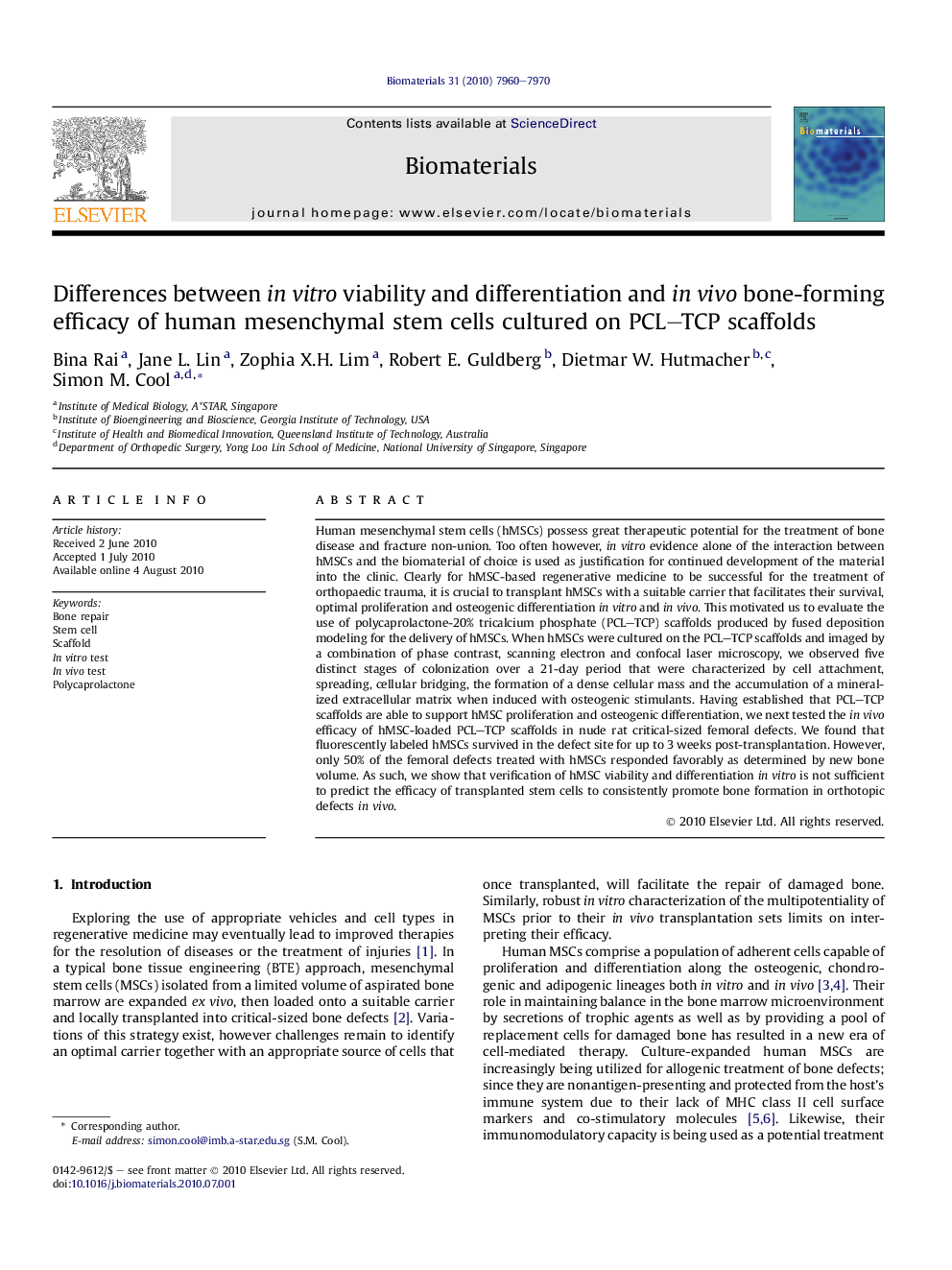| کد مقاله | کد نشریه | سال انتشار | مقاله انگلیسی | نسخه تمام متن |
|---|---|---|---|---|
| 8051 | 575 | 2010 | 11 صفحه PDF | دانلود رایگان |

Human mesenchymal stem cells (hMSCs) possess great therapeutic potential for the treatment of bone disease and fracture non-union. Too often however, in vitro evidence alone of the interaction between hMSCs and the biomaterial of choice is used as justification for continued development of the material into the clinic. Clearly for hMSC-based regenerative medicine to be successful for the treatment of orthopaedic trauma, it is crucial to transplant hMSCs with a suitable carrier that facilitates their survival, optimal proliferation and osteogenic differentiation in vitro and in vivo. This motivated us to evaluate the use of polycaprolactone-20% tricalcium phosphate (PCL–TCP) scaffolds produced by fused deposition modeling for the delivery of hMSCs. When hMSCs were cultured on the PCL–TCP scaffolds and imaged by a combination of phase contrast, scanning electron and confocal laser microscopy, we observed five distinct stages of colonization over a 21-day period that were characterized by cell attachment, spreading, cellular bridging, the formation of a dense cellular mass and the accumulation of a mineralized extracellular matrix when induced with osteogenic stimulants. Having established that PCL–TCP scaffolds are able to support hMSC proliferation and osteogenic differentiation, we next tested the in vivo efficacy of hMSC-loaded PCL–TCP scaffolds in nude rat critical-sized femoral defects. We found that fluorescently labeled hMSCs survived in the defect site for up to 3 weeks post-transplantation. However, only 50% of the femoral defects treated with hMSCs responded favorably as determined by new bone volume. As such, we show that verification of hMSC viability and differentiation in vitro is not sufficient to predict the efficacy of transplanted stem cells to consistently promote bone formation in orthotopic defects in vivo.
Journal: Biomaterials - Volume 31, Issue 31, November 2010, Pages 7960–7970